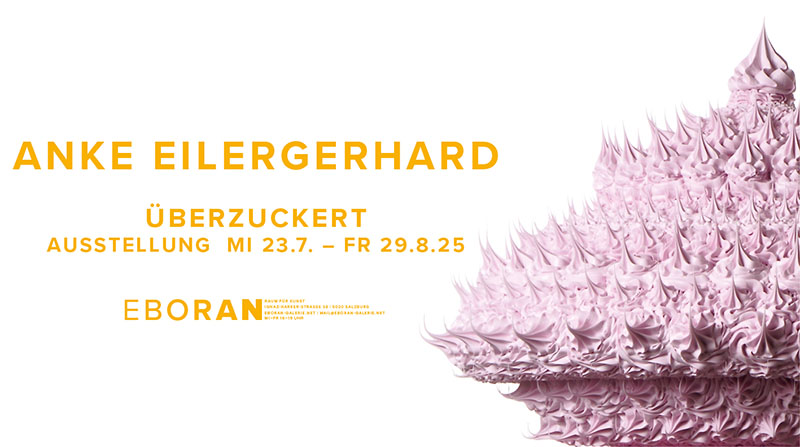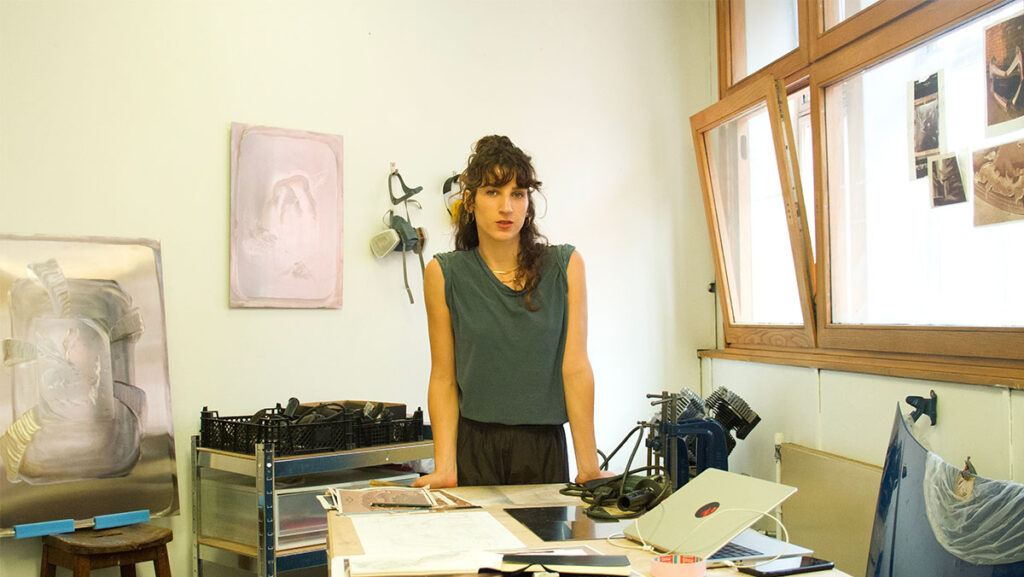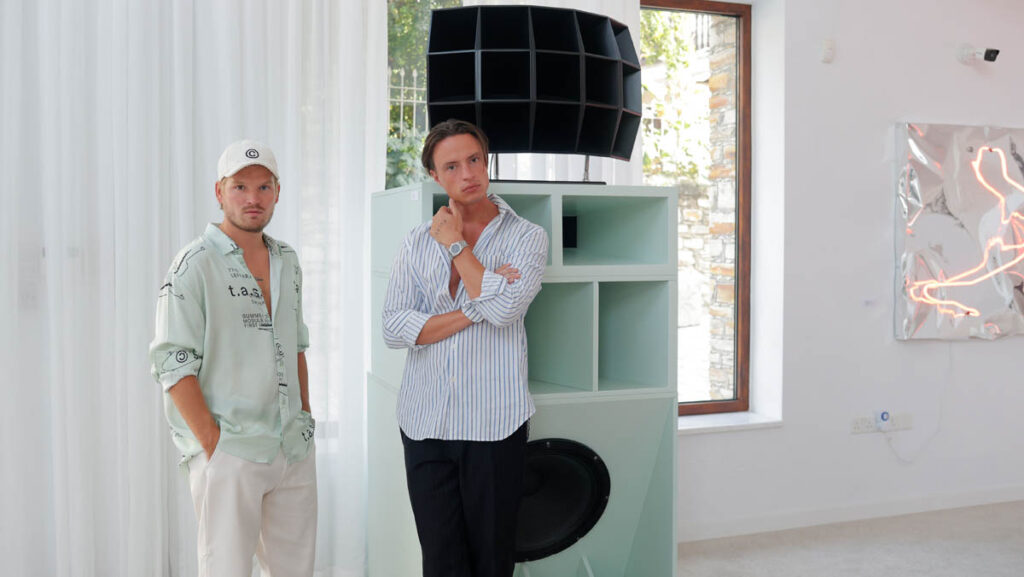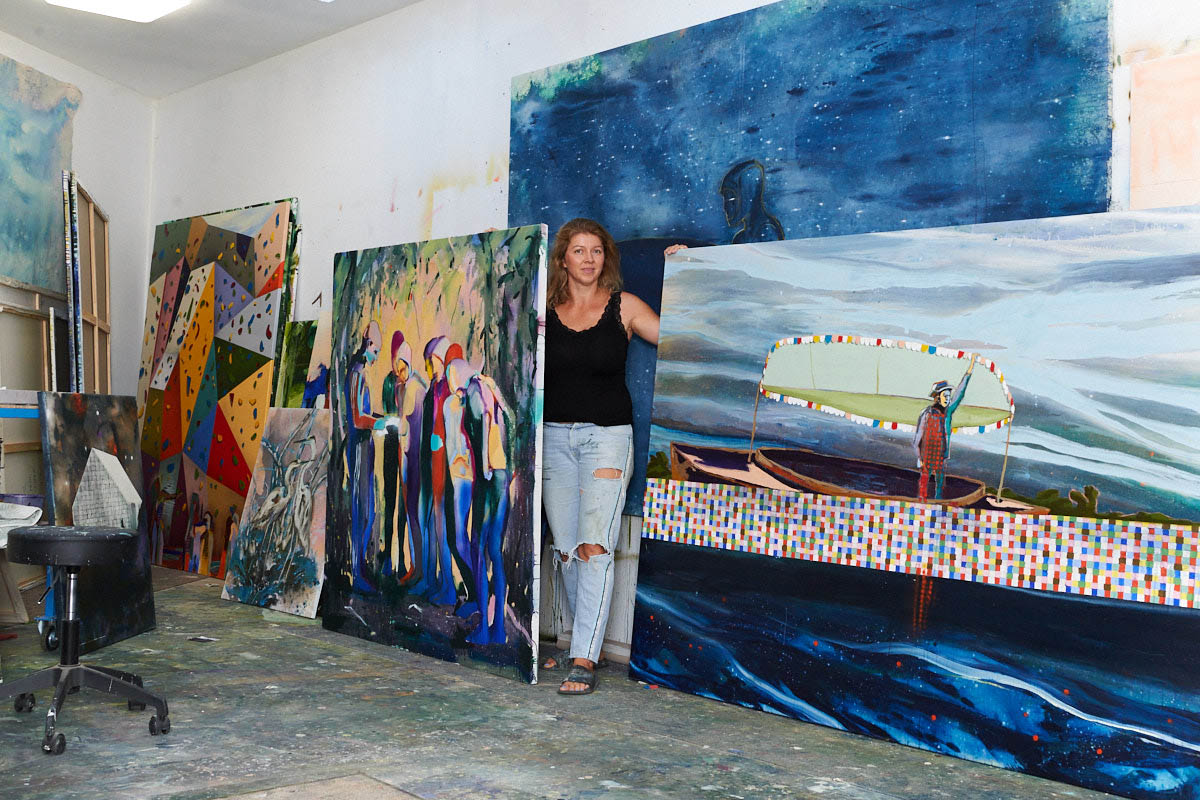
How were your beginnings? How was your way into painting?
I grew up in a small village in Slovakia, in a family with Hungarian roots. There were no galleries in our area, and I didn’t know anybody who was an artist. I just got interested in drawing as a child. I went to drawing classes and then later to art high school. After that, I studied printmaking in Bratislava. In my 4th year, I went to London, UK, and there I saw a young British artist exhibition at the Saatchi Gallery. It was the year 2000. I fell in love with big canvases, and these exhibitions encourage me to start exclusively painting. My printmaking background gave me an early influence on painting, and then slowly I developed my own painting style.
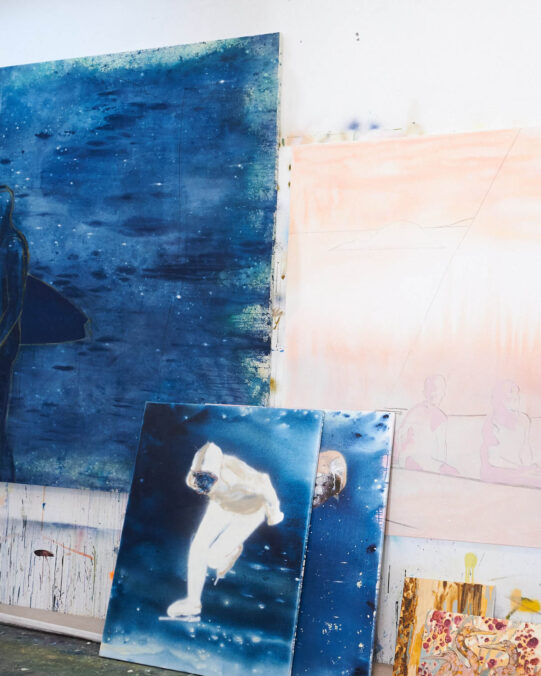
Kristína Mésároš in her studio 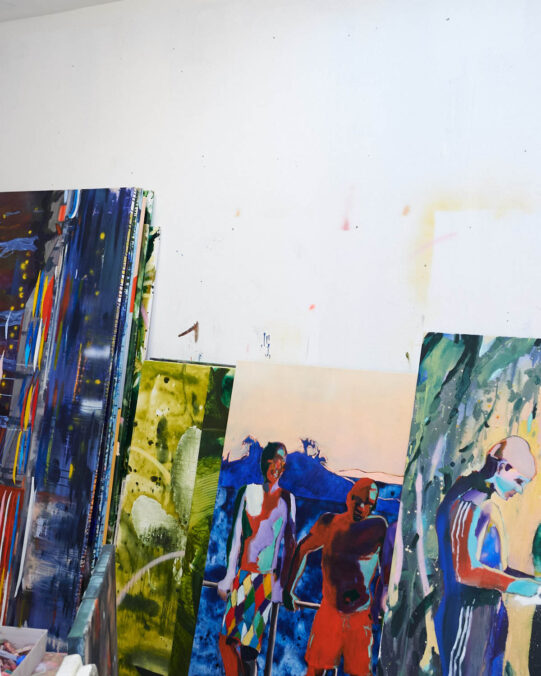
Kristína Mésároš in her studio 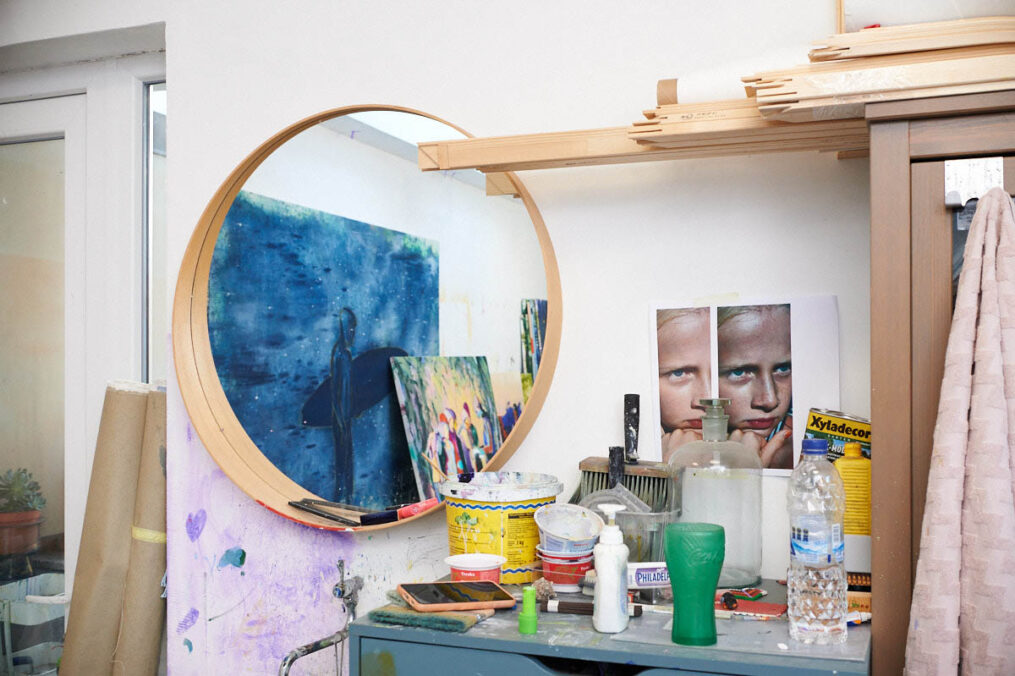
Kristína Mésároš in her studio
What were your first painting motives, and how are they connected to your work now?
In the beginning, the subject of the painting was very important. I have written a lot of poetry, but mainly short stories, relying on magic, fantasy, and even science fiction. The tales I wrote and tried to depict in my painting were stories I was interested in, and I wanted to try to find answers to my personal questions. Right now, after many years, my ways of preparing for the painting have changed, but the text remains important inside the titles of the work.
You travel a lot; how is your artistic practice connected to your journeys?
This year I went to Paris for two months on a Cité internationale des arts residency. As always, when I travel, I try to leave my comfort zone. In Paris, I tried to focus on the beginnings of my work. I recalled my time in Bali and Singapore, where I was doing my PhD thesis. Back then, social media didn’t exist, and my real-life experiences and knowledge gained on those travels were my main source of inspiration and the way I connected to society. When I was a child, I already felt like I wanted to travel to faraway places. Once I wrote to the American Embassy in Slovakia, I wanted to study in America. The notion of movement and travel has been with me from the very beginning.
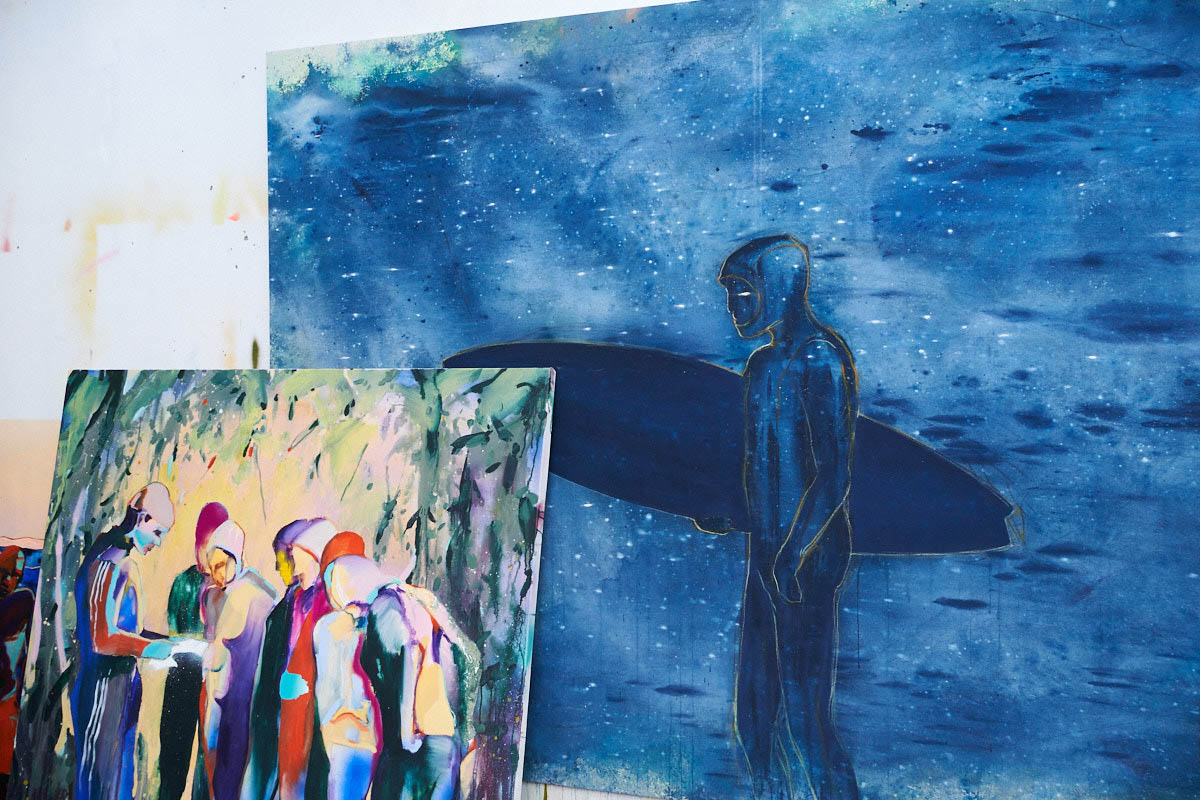
How have your studies in Asia influenced your work?
I come back so often to this period in my life when I was living in Asia because my memories of that time are so vivid. I remember all the details because I was so present. When I was in Bali, I studied Indonesian, I was surfing, I felt the most freedom, and I lived those moments over and over again. The color palette I discovered there in those exotic environments has kept me inside my work for this long.
Next to the notion of movement, there is also the motive of stability in your work and a depiction of a stable, house, or home. How this juxtaposition is working.
Home is for everyone something else, and feeling safe is something everyone experiences differently. That’s why the symbols that represent stability are equally important inside the work because they are a way of connecting with the viewer. The deeper level I am trying to reach inside my painting, the more I am always trying to find the inside of my past. I play with symbols, mainly water, and thread next to others. The symbols that trigger emotional impulses in the viewer also leave a lot of space for the viewer to interpret their own feelings and past experiences.
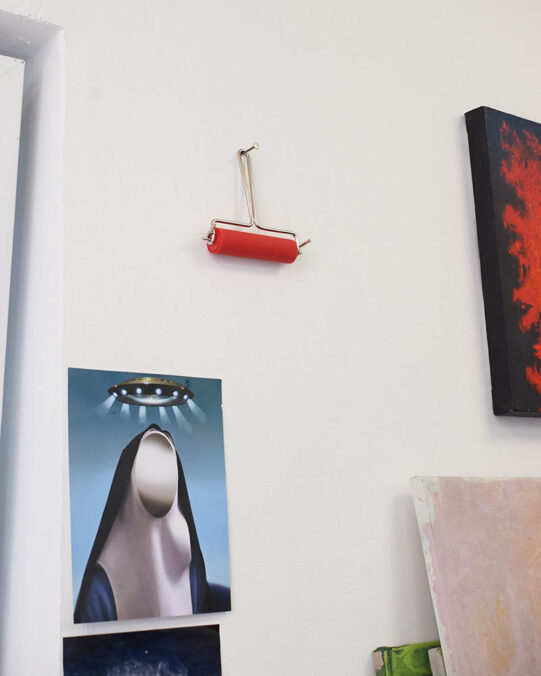
Artist Studio 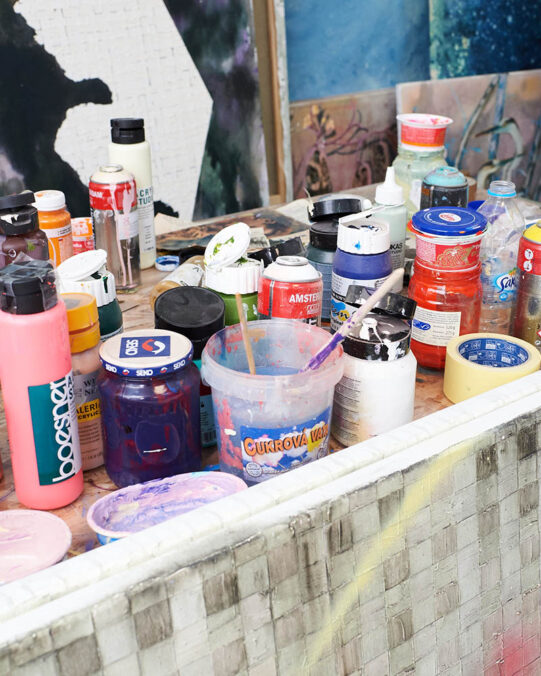
Artist Studio
Is printmaking still part of your practice?
I still have a huge printing machine in my studio, and sometimes I dream and think about prints, but I guess I will do prints again once I am older when I will hopefully have more time because the printing process takes a lot of time and the process is very complicated.
What was the biggest format you worked with?
The biggest canvas I painted is 3 per 4 meters. I love to work with big formats because it gives you more space to make bigger decisions and work with more freedom. Once they are done, the practical question of how and where I can exhibit them appears. Big formats always seem to be more complicated, but their presentation is still something I am impressed with.
After many years of practice, you know well how to plan your projects and exhibitions, but what does the whole process look like?
For example, when I went to Paris this year, I didn’t bring with me even one brush from my studio. I wanted to challenge myself and start with new inputs and a new color palette. I went to the Musée d’Orsay to fulfill my wish to see old masters work. This was a trigger for me to start a series of small-format paintings inspired by Fauvism. But about planning the exhibitions, I work in series and in chapters. I can say I am working a lot, like every day. So I often choose works I would love to exhibit in a particular place and arrange them together.
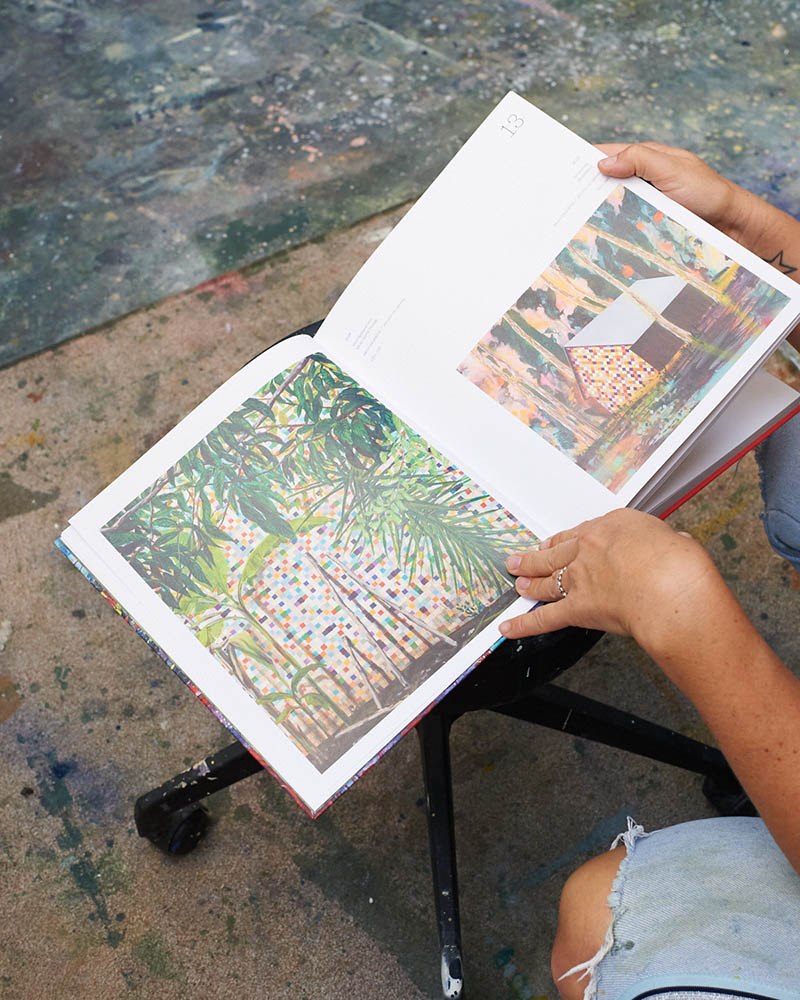
Artist Studio 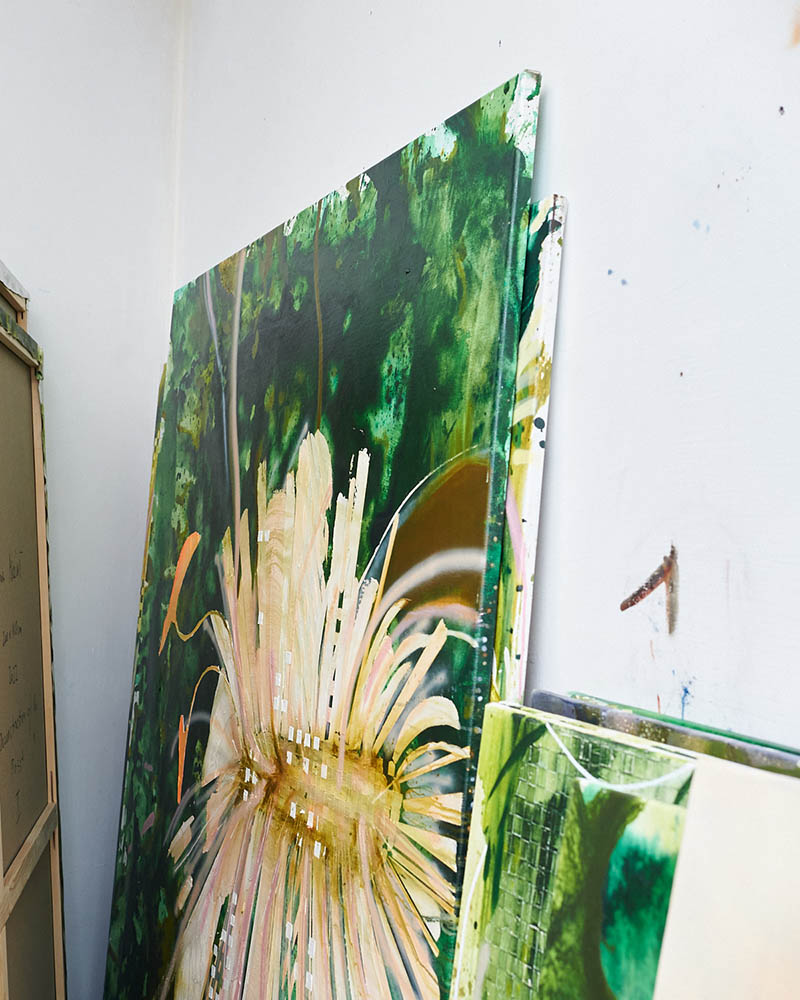
Artist Studio
What does your relationship with curators and art historians look like?
I feel I miss the presence of a curator or art historian from the very beginning of my practice— someone who will be there every step of the way with me, spend time talking about art and trends, visit my studio annually, and see how my work is developing. I think it is important to build this relationship. I feel that was the practice that was happening in the past; you would have someone knowing your whole body of work, but nowadays, a curator is someone who mainly works on projects, and it is not often connected with an artist on that level. I wish this was different.
What does your working routine look like?
I am not a morning person per se, but I love it when I have a long coffee in the morning while reading and watching stuff related to my work. I start to work in the afternoon, and ideally, I would work till ten or eleven in the evening. The process is always intuitive for me; I always try to play while working and often activate my own body during the making. You can often find me in my garden painting with long sticks on the floor. I always want to experience joy while making art. Then, when it comes to exhibiting and setting up, I am being exact and clean.
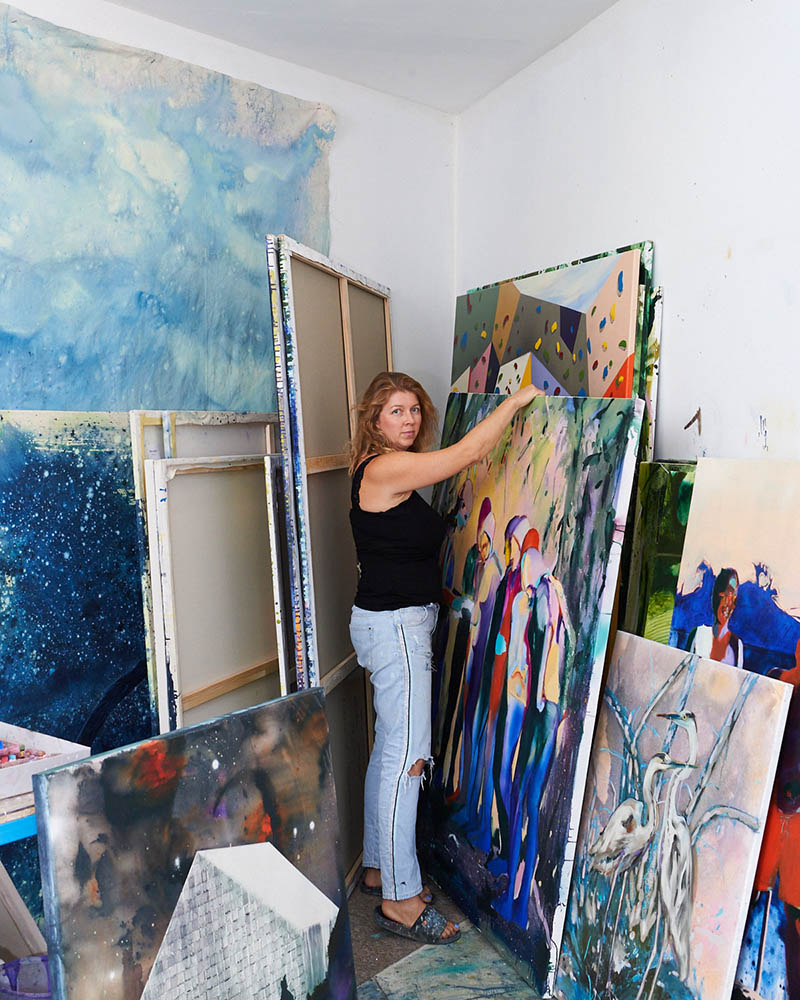
What are your plans and projects for the near future?
I am a member of Künstlerhaus in Vienna, and since I live in Austria, my wish is to connect as much as possible with my colleagues from the country and to meet as many artists working in my surroundings. Also, I am in my final preparations for a museum exhibition in Slovakia that opens on October 12, 2023, and will run until January 7, 2024, in the Orava Gallery in Dolny Kubin, Slovakia.
When it comes to the sci-fi that we mentioned, what are your recommendations for movies and books?
Matrix, of course, but a few days ago I saw Matrix 4, and it was terrible, so I would say Matrix 1 and 2. I remember reading The Sandman, a comic book series by Neil Gaiman, in London.
Kristína Mésároš – www.kristinamesaros.com, www.instagram.com/kristina.mesaros/



